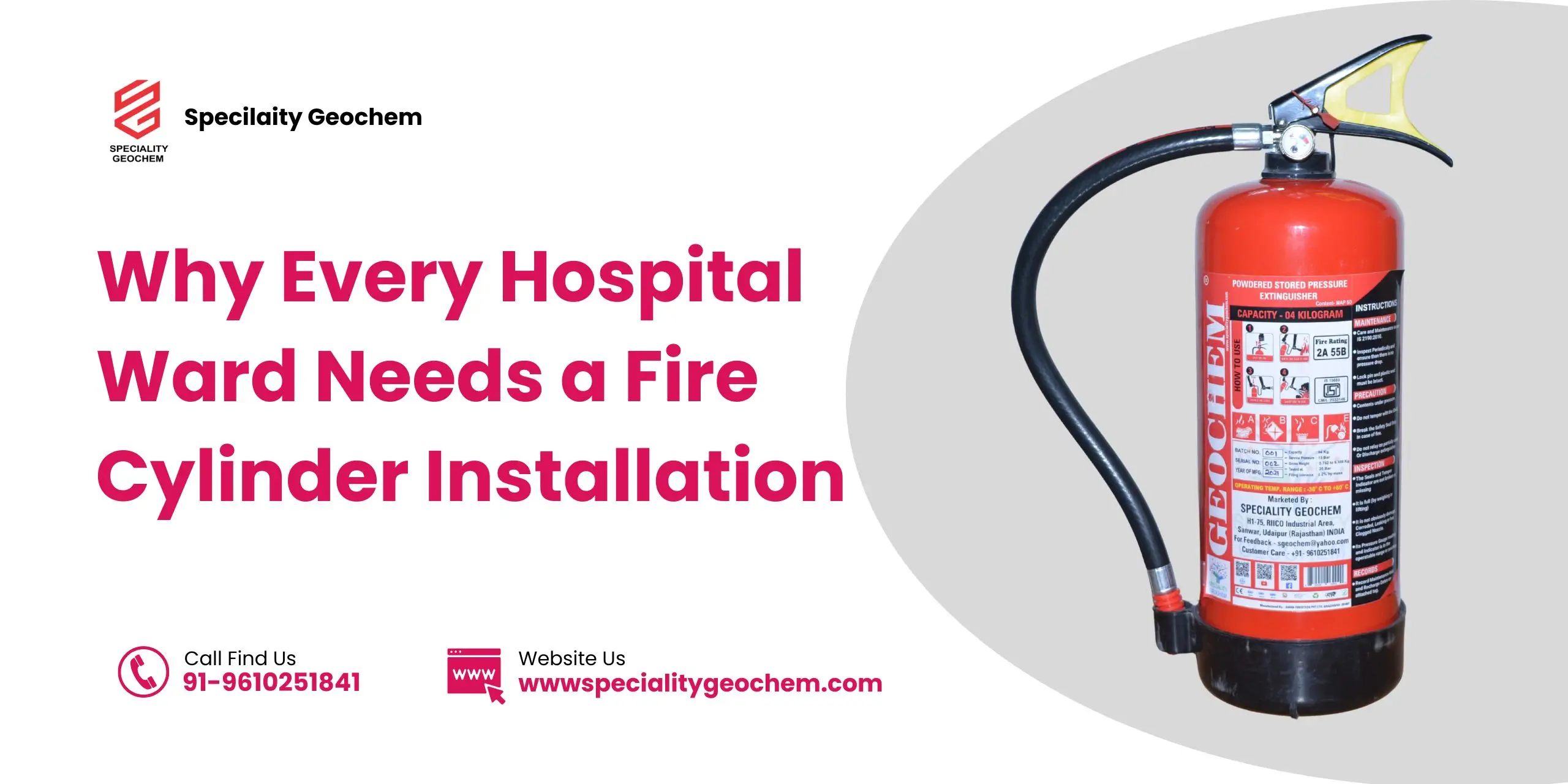Fire Cylinder Installation: Hospitals are places of healing, safety, and trust. Patients, doctors, nurses, and visitors expect a secure environment where health and recovery remain the primary focus. Yet, amidst life-saving procedures and advanced medical technologies, one often overlooked threat lurks silently—fire hazards. From oxygen cylinders to electrical equipment, from chemical storage rooms to patient wards, the risk of fire in hospitals is far more serious than in ordinary buildings.
To combat this risk effectively, one crucial step every healthcare facility must prioritize is fire cylinder installation. It is not just a legal requirement in many regions but a life-saving necessity that ensures quick response and suppression in case of an emergency.
The Unique Fire Risks in Hospitals
Unlike residential or commercial spaces, hospitals face complex and high-risk scenarios:
- Oxygen-Rich Environment – Oxygen cylinders and centralized oxygen supply systems can intensify flames if a fire breaks out.
- Electrical Equipment – Machines like ventilators, MRI scanners, and dialysis systems run continuously, increasing the chance of short circuits.
- Flammable Materials – Hospital wards often store chemicals, sanitizers, and disposable medical supplies, many of which are highly combustible.
- Vulnerable Occupants – Patients on life support, the elderly, and children cannot evacuate quickly, making fire safety measures even more critical.
Because of these risks, hospitals cannot depend only on alarms and evacuation plans. Fire cylinder installation becomes the backbone of active fire protection.
What is a Fire Cylinder and Why is Installation Crucial?
A fire cylinder, commonly known as a fire extinguisher cylinder, is a pressurized device filled with fire-suppressing agents such as dry chemical powder, CO₂, or foam. It is designed to quickly tackle different classes of fire before they spread uncontrollably.
Fire cylinder installation ensures these devices are placed strategically in wards, corridors, ICUs, and near high-risk zones like electrical panels or oxygen storage rooms. Proper installation is not only about hanging cylinders on walls but also about compliance with safety codes, accessibility, and periodic maintenance.
Benefits of Fire Cylinder Installation in Hospital Wards
1. Immediate Response to Fire
Time is the most critical factor during a fire emergency. A properly installed cylinder allows healthcare staff to act instantly, suppressing flames before they grow larger and more dangerous.
2. Compliance with Legal Standards
Regulatory bodies and fire safety departments mandate that hospitals must have fire extinguishers installed in wards and corridors. Non-compliance can lead to penalties, closure notices, or worse—avoidable tragedies.
3. Protection of Patients and Equipment
Hospitals house expensive medical equipment and delicate infrastructure. Quick fire suppression prevents damage to these assets while ensuring the safety of patients who cannot evacuate on their own.
4. Peace of Mind for Staff and Visitors
Doctors, nurses, and patients’ families feel more secure knowing the hospital has taken adequate precautions. Confidence in safety builds trust in healthcare services.
Key Areas in Hospitals That Need Fire Cylinders
- Patient Wards – For immediate response where patients are immobile.
- Intensive Care Units (ICUs) – Sensitive equipment requires non-conductive extinguishers like CO₂.
- Operation Theatres – High-risk zones with oxygen supply and electronic equipment.
- Pharmacy and Chemical Stores – Storage areas for alcohol-based sanitizers, chemicals, and flammable medicines.
- Corridors and Exits – Ensuring fire suppression during evacuation.
Strategically mapping these zones ensures that fire cylinder installation covers every vulnerable point in the hospital.
Choosing the Right Type of Fire Cylinder for Hospitals
Not all fire cylinders are the same. Hospitals need a mix depending on the location and fire risk:
- Dry Chemical Powder Cylinders – Effective for multiple fire classes, including electrical fires.
- CO₂ Cylinders – Best for electrical and electronic equipment, leaving no residue.
- Foam Cylinders – Suitable for flammable liquids, often found in storage rooms.
- Water Cylinders – For Class A fires (wood, paper, cloth), but should be avoided in areas with electrical equipment.
The combination of these ensures a holistic safety net for the hospital premises.
Importance of Professional Installation and Maintenance
Simply buying a fire extinguisher is not enough. Hospitals must ensure:
- Correct Placement – Cylinders should be at accessible heights and clearly marked.
- Regular Inspections – Pressure, expiry date, and condition must be checked monthly.
- Training Staff – Doctors, nurses, and ward boys should know how to operate the cylinders effectively.
- Annual Refills and Servicing – Empty or expired cylinders can cost lives.
This systematic approach ensures that fire cylinder installation is not just symbolic but genuinely life-saving.
Real-Life Incidents That Prove the Need
Several fire tragedies in Indian hospitals have made headlines in the past decade. In many cases, investigators found that either fire cylinders were missing, inaccessible, or not maintained. These unfortunate events underline why proper installation and training can save hundreds of lives during a single emergency.
Conclusion:
Hospitals are centers of healing, but their safety depends on proactive measures against unforeseen threats like fire. A fire cylinder installation is more than equipment—it represents preparedness, accountability, and protection. By empowering hospital wards with advanced fire cylinders, training healthcare staff, and ensuring regular maintenance, institutions safeguard patients, protect critical infrastructure, and strengthen community trust.
At Speciality Geochem, we believe fire safety in healthcare is not just compliance—it is a commitment to saving lives. For hospitals aiming to uphold their duty of care and build lasting confidence, investing in reliable fire cylinders is not optional, it is indispensable.

